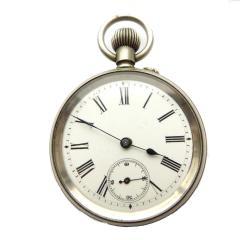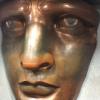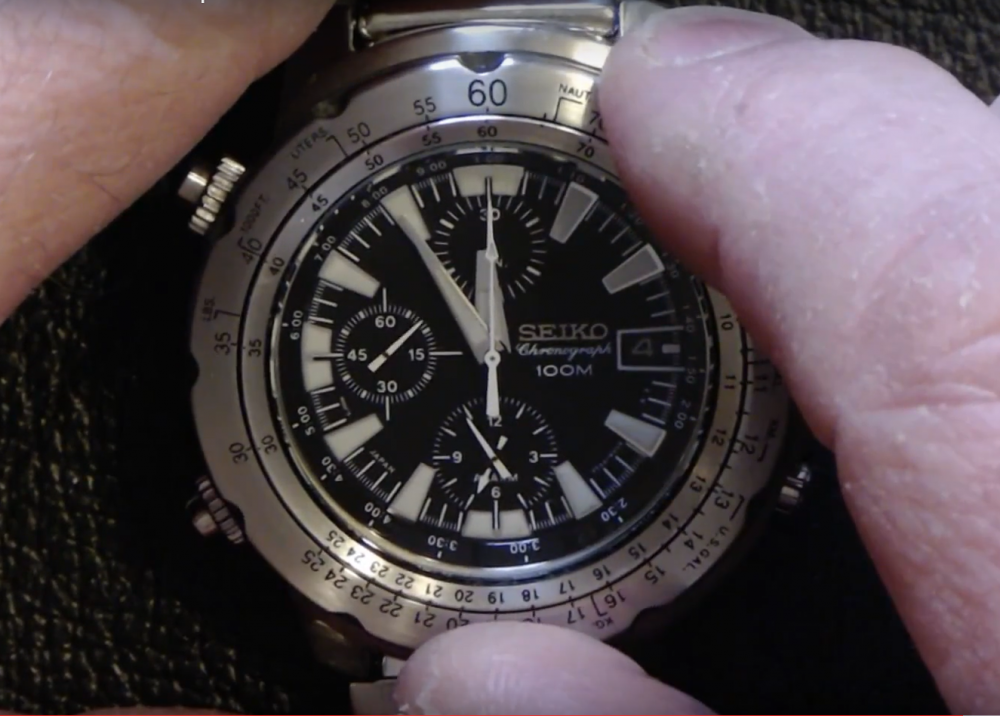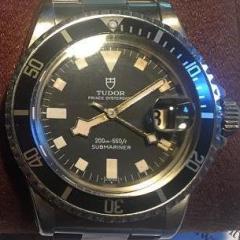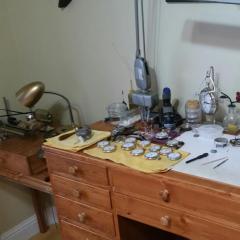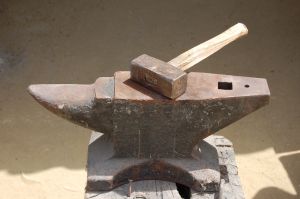Leaderboard
Popular Content
Showing content with the highest reputation on 04/11/18 in all areas
-
Ok. This has gone far enough. We are all here to help each other. I fear this thread is not going in the direction the OP intended and as the issue is pretty much resolved I will close the thread. To the OP: if the issue is not resolved and you wish me to reopen the thread then Please PM me and I will do so. Anybody who does not wish to be involved in any threads can easily unsubscribe from notifications at the top of the page. I think we all need a beer and chill Sent from my SM-G950F using Tapatalk4 points
-
Thank you for everyone's words of expertise and I will definitely be taking all of it in mind continuing forward. I've been trying to open up the caseback with rubber balls and duct tape so far but it's not budging, so I'll just have to wait until the tools I've ordered come in. Stay tuned for pictures of the inside when I get it open!3 points
-
It's been mentioned a few times on here before but you don't really need to be able to wind in both directions, although it is simpler. You can wind the mainspring and if it needs to go in the other direction you can push it out into a small circular object (washer, nut, empty mainspring ring etc.) flip that over and press out - direction reversed. I have the same set as you (teegee) and I find it good, but as you have noticed the arbours are often too big. I sometimes use smaller size handles with the barrels and this works well providing it isn't too loose. I do wonder if older mainsprings used smaller arbours as I have not had this problem with older mainspring winders. I don't often work with modern watches so I'm just guessing. I wouldn't worry about the branding, it's not as if you'd get any better tool if it said Bergeon. In fact it probably comes from exactly the same factory anyway. It's not as if Bergeon really make anything very much (if at all) they either contract others to do it or just buy in products and brand them. Rogart I've used that winder before. Although it works I found it difficult to control, perhaps because I have big fingers. I much prefer the handle style of winder.2 points
-
Hi everyone, Previously in one of my other posts I mentioned I had made my own video camera for watch repairs. Well, I used it for the first time a few days ago just to get used to it and I'm sort of happy with the results. I've still got to tweak the sensor a bit, it needs a clean. My first ever video is without voice over, but as I get used to doing videos I'll add voice overs as well. The working distance from the lens to the bench was 45cm. I've got to make a decent daylight LED lamp which will improve the depth of field and focus. This video was made using ordinary warm LED room lighting. Anyway, here's a link to the Video, I hope you like it: https://www.youtube.com/watch?v=epkBJenwxzA And here's a snapshot taken towards the end of the video.1 point
-
I made a button crown for a Pocket Watch. It is a ver simple crown but was a challenge to make by hand. I will be uploading a “howto” video soon, but here is my current problem. The crown is round and currently has “average “ grip. Any suggestions for improving the grip. I have no knurling tools. Sent from my iPhone using Tapatalk Pro1 point
-
My thinking goes along these lines: The name - Ingersoll-Trenton. This must be after the purchase of Trenton by Ingersoll in 1908 The Serial number. I get a range from 1885 to 1908 The case - manufactured in 1908 So the purchase says it can't be before 1908 or it would not have the combined name. The Serial number says it can't be much after 1908 The case was made in 19081 point
-
If you have a lathe (I'm assuming you do since you turned the crown) there are very economical knurling tools available on eBay. I just purchased one a few weeks back to put a coin edge on a knob- worked like a charm. The tools are available from China so they can take a few weeks for delivery though. Take a look at Clickspring's YouTube channel for knurling on a lathe. He makes everything look possible.1 point
-
there are sites to date the case. the movement should be dated separately. vin1 point
-
Thank you all for the warm welcome! I have successfully completed two restorations so far, and a few others in the works. 1) Rolex 1680. I got this from an online retailer at a reasonable price based on condition and the serial number- it MIGHT have been a "red" sub when sold new. It had a nice service dial, updated crown, wrong crystal etc. I changed the crystal first, since that's the iconic look of the 1680 "top hat" crystal. Then I had the case restored by Michael Young. Then a new bezel ring was added, with a period correct insert. The insert was missing the "pearl" so I installed an NOS Tritium pearl. An NOS 702 crown and tube complete the mechanicals. A correct for the serial range "Mark I" white dial was sourced and installed. (Mark VI red dials are very rare and cost more than I have into this entire project, but the print and color are very crisp and vibrant) I also changed the service (white) date wheel to a correct silver one. The bracelet is also a bit of a "unicorn". Rolex guys know the bracelets all have date codes, and you want your clasp code to reflect the date of the watch head. Except, there was one bracelet without a date code... The very first use of the 93150 bracelet did not have a date code on it. Michael Young also resurrected my bracelet parts collected over several years to put the early 93150 links with the no-date early 93150 clasp I had. Now it represents all period correct. I'm quite proud of the effort and research to make this watch "right" again. 2) Tudor 9411/0 black (my avatar photo). This was an eBay "score". I took a big risk on it due to poor photos, and it paid off in spades (I bought it well under the market price at the time). This watch appears to have been serviced one time since 1978, if that. It still had the original crystal and original crown installed. (I saved those for posterity) I installed an NOS crystal and crown, leaving the original tube. Cleaned the case (which was NASTY- bezel did not rotate at all!) and replaced the gaskets. Installed a much newer 93150 that was a take-off (not a service bracelet) that was/is really mint. One of my favorite watches for sure. My current projects include another 9411/0, but with a coveted blue dial. It's currently assembled with an aftermarket case I shaped a bit better than as it was received. The bezel insert is also aftermarket, but I did an overlay comparison with the genuine one I have, and it is so close (color, font everything!) I never bothered to switch them. Movement is a Tudor movement (not just a regular Eta 2784) and the dial is an original, first issue blue dial. These blue dials all suffered from "dial rot" and 99% of them got replaced either as a warranty claim, or at the first service of the watch. So, they are VERY hard to find in good condition- large chunks of the blue paint will fall off them. I found one in Italy as I recall, and it is rotted, but fully intact. Hour hand is genuine and I have a genuine seconds had as well for it. But, the seconds hand did not fit the pinion- it needs to be broached. I don't understand this but that's why I currently have an aftermarket seconds hand. Normally not a big deal but due to the extreme fragility of these dials, it is major anxiety for me whenever I need to pry hands off. A hand holder and broach set is on my shopping list... The real excitement is that I just received an original case for this watch. A 1976 9411/0 case in VERY good condition. Some crevice corrosion on the back and top (which helps confirm it's genuine in the Rolex case minefield). I will install an NOS crystal 702 crown and tube and then continue my hunt for a genuine bezel assembly. I have another NOS pearl to add to the original insert, so that's covered. It currently wears a Navy blue Isofrane strap, which is quite nice, but I'd like to find 9315 folded link bracelets for this, and the black, Snowflakes (with those correct date codes!) to really call them "done". The last project that has taken me literally years to collect parts for should have been the easiest. An Omega Seamaster 300 (166.024). When I started it, Ofrei had all the parts, including complete cases. Then the case price rose sharply, and finally, no more stock. I procrastinated too long, focusing on my Rolex projects. But I have everything but a case tube in stock now. The mid-case is aftermarket, but everything else (down to the movement clamps!) are Genuine Omega parts. The old 565 movement runs strong and it's fun to have a movement that is not just like every other movement- the quick-set date operates by pulling the crown in and out). This has a new production dial, hands and bezel, so it has very bright Superluminova. You really get the experience of how bright these things were when new back in the late 60's. Some may argue it's faster and easier to save some money up and then hunt down the best example of the watch you want. But you know what? I enjoy the process of hunting down the right parts, at fair prices, and putting things "right" on otherwise neglected watches. I hope to expand into other Rolex and Omega watches, to then offer them for sale. I prefer that path to repairing or restoring customer's watches as I can do my job in my time; and only when I'm ready to, will it be offered for sale. Thanks for reading my life story!1 point
-
This image So that hallmark is Birmingham 1908 https://www.silvermakersmarks.co.uk/Dates/Birmingham/Cycle 1900-1924.html And the makers stamp is as you say Dennison http://www.silvercollection.it/ENGLISHSILVERMARKSXA3.html#862ING So - would it be reasonable to suggest this watch was made on or around the year that Ingersoll bought Trenton - i.e. 1908?1 point
-
If you are willing to cover shipping, I could take a look at it down under (Australia). It is likely that the workshop is full of it. A mate had a Girard with a broken Balance staff which he was quoted $1000 to fix and 12 months wait. I fixed it for $20 for genuine balance. A lot of these top end places just dont want to deal with this due to risk of something breaking later so they give you crazy prices to keep you away. For what its worth, alot of parts in watches are brass/stainless/plated so they don't rust very much. There is usually a sacrificial part such as mainspring or movement ring which rusts and causes a lot of debris. I took a AS movement which was soaked in salt water and brought it back to life by soaking parts in WD40, then vinegar and coke. I fixed a Wyler which looked 10x worse than your watch, all it needed was cleaning and gentle care. Cheers.1 point
-
Here is what I found on the net: The Trenton Watch Company was a successor to the New Haven Watch Company, which had been started in 1883 in New Haven, Connecticut, but had undergone financial reorganization in 1887. Trenton produced nearly two million watches, most of which were lower to mid-grade pieces in the 7-9-11 jewel range. Most of the watches produced were intended for the domestic market, but factory records indicate that some watches were produced for export to England around the turn of the century. Trenton was subsequently sold to Ingersoll in 1908. Trenton-produced watches were marketed under a variety of brand names, including: Trenton, Ingersoll Trenton, Fortuna, Calumet USA, Advance Watch Co, Marvel Watch Co, Reliance Watch Co, Locomotive Special and Engineers Special. Both the Engineers Special and Locomotive Special were marked as 23-jewel watches, even though they had only 7 functional jewels... the others were fake and were entirely for appearance! Similarly, the watches sold under the Marvel Watch Co. brand-name were marked 23-jewels, even though all but 7 jewels were non-functional. Some of these "fake jewel" watches can be quite collectible today. Trenton also produced two 18-size fly-back chronograph models, both with 9 jewels. Based on a Grade 40 or 41 with chronograph modifications, the watches were produced in limited quantity, and these watches are considered to be quite rare and collectible today.1 point
-
i have - very interesting. I'll double check. It's got an overcoil on and still has some IPA on it when the photo was taken. I'm wondering if the balance staff needs replacing - not something I feel confident attempting at the moment.1 point
-
You should be posting the scope diagram that will give us a clue. Problem is we looking at a complex waveforms it's made up of five separate sounds which typically get idealized into three sounds that look really nice pure and clean. For instance the PDF below and the image I'm posting below. Notice how nice and clean it looks your scope will not look like this. So the absolute most important sound is the roller jewel hitting the fork everything uses this. This requires very quiet background and a really nice initial sound just like it shows a diagram down below. So rate, beat an amplitude all rely on this sound. Amplitude relies on by the diagram below the third sound which is locking. It's really easy to trigger off because it's a really loud sound. The basically you're going to trigger off the most quiet sound and the most loud sound. Which the diagram below is super easy to do. But the diagram below is not the way they look. I'll take a flash drive to work today and see if I can capture some witschi oscilloscope images so I can show you that even the witschi has issues with where it picks up things. So reality versus the fantasy below. What if we don't trigger off the roller jewel what if we have a non-technical term a mushy signal. So if we can't get a clean initial triggering the graphical display may show some way Variations will still get a rate will still get a beat and If you get the amplitude because you moved to triggering part farther in the amplitude numerically will be much higher. IIf you don't pick the initial up at all and you move much farther in like all the way to locking you'll get a graphical display with rate and beat zero amplitude. So let's see what the scope looks like we'll get an idea of what the software is trying to interpret. https://www.witschi.com/assets/files/sheets/Test and measuring technology mechanical watches.pdf1 point
-
There was an interesting video on Youtube on knurling using a standard thread tap mounted in a lathe, the item to be knurled was attached vertically and allowed to spin freely, then was advanced onto the turning tap slowly, the cutting edges of the tap both cutting and turning the piece at the same time. I'll try to find the link and post it.1 point
-
The OP states he's a Newbie but this reference is to the forum and also has successfully serviced other movements. So he's not a complete novice. I think a practical observation of the watches behaviour over 24 hours would be prudent. Sent from my SM-G920F using Tapatalk1 point
-
Exactly and I personally would be monitoring the watches behaviour prior to taking further action. Also am I missing something ? Is the Ops watch running + or - the figures given. Even without a trained eye, I doubt the balance would oscillate with the figures given and the OP could form a valid opinion, probably. I remember once servicing a pocket watch with quite a healthy balance rotation and after my over oiling, the performance was very poor. It did recover from my abuse. I've since learnt one drop of oil can service many movements. As a hobbiest I also have the luxury of running a watch after servicing for several days and allowing the watch to settle, prior to any assessment on my timegrapher. Also I constantly demagetise as I believe this can give a whole range of false readings other than running fast. All said, it's probably a hairspring issue but I'm learning not to make assumptions. Sent from my SM-G920F using Tapatalk1 point
-
So it appears to be running smoothly is an interesting statement. Plus not having a trained eye? On a modern balance wheel how easy is it to tell whether it's operating correctly or not? This is exactly why I purchased a timing machine a real timing machine that's reliable they can tell me things that I may or may not be able to see. So one of the problems with a lot of these timing applications are are they really reliable? So the indication is you have a problem visually you think everything is fine then let's find out? The only real test of whether a Watch is fine or not is to put the hands-on wind it up and see what it does 24 hours later.1 point
-
1 point
-
Only animals use a drill bit, there certain tools for doing certain jobs. Sent from my iPhone using Tapatalk1 point
-
The correct way to fix this is to broach out the pivot hole, fit a bush then re-establish the hole and oil sink. You will also need to refinish the pivot by filing and burnishing on a jacot tool. You will most likely find guidance on the net by searching for clock pivot bushing. I know there are better links if you look hard, but here is a quick summary http://www.m-p.co.uk/muk/ryoc/doc_page16.shtml I know that some would fit a jewel as it’s quicker and easier, and some would try and punch the edges of the hole to close it up. Neither would be my recommended option!1 point
-
1 point
-
And even more it shows. If you look at the hairspring collet: this is not the original hairspring, probably reason of your timing problems (apart from amplitude issues). Frank0 points

